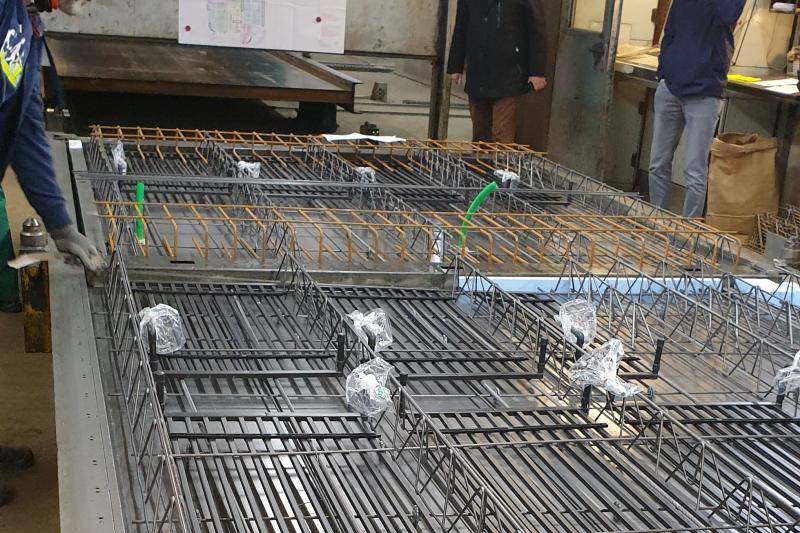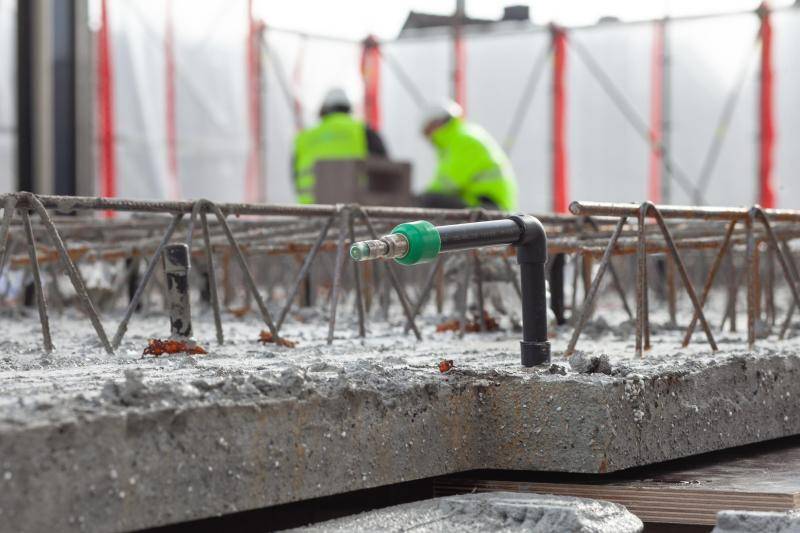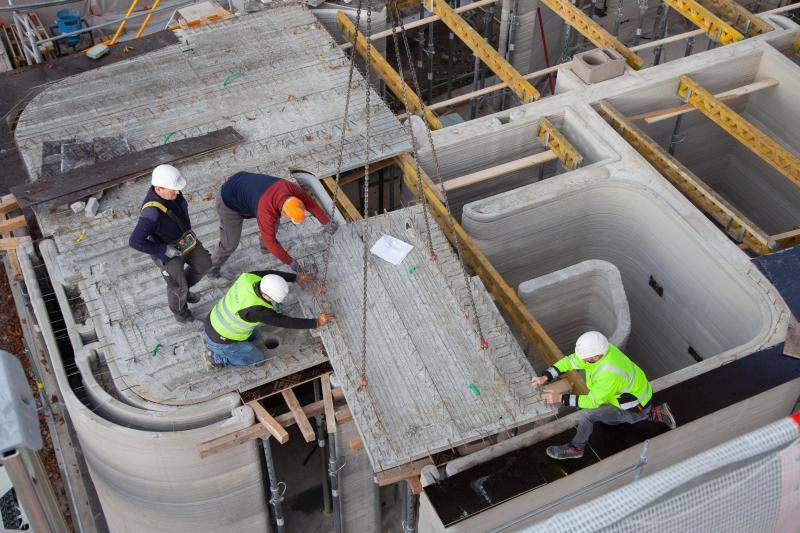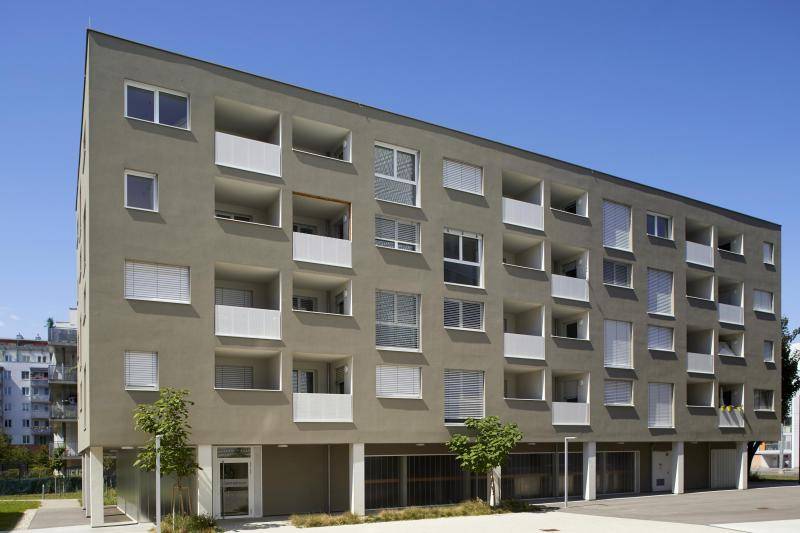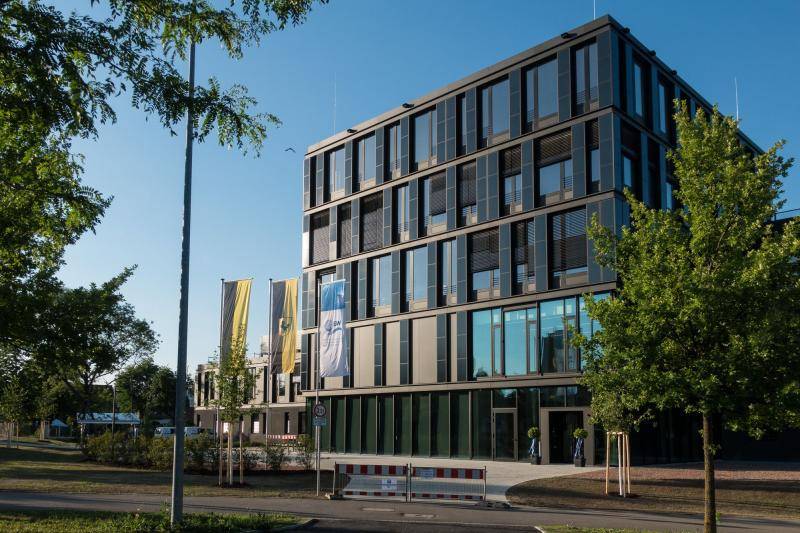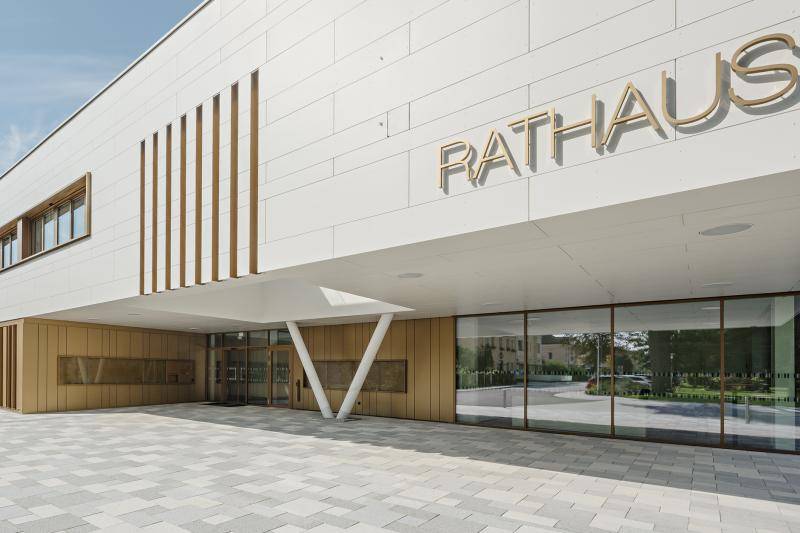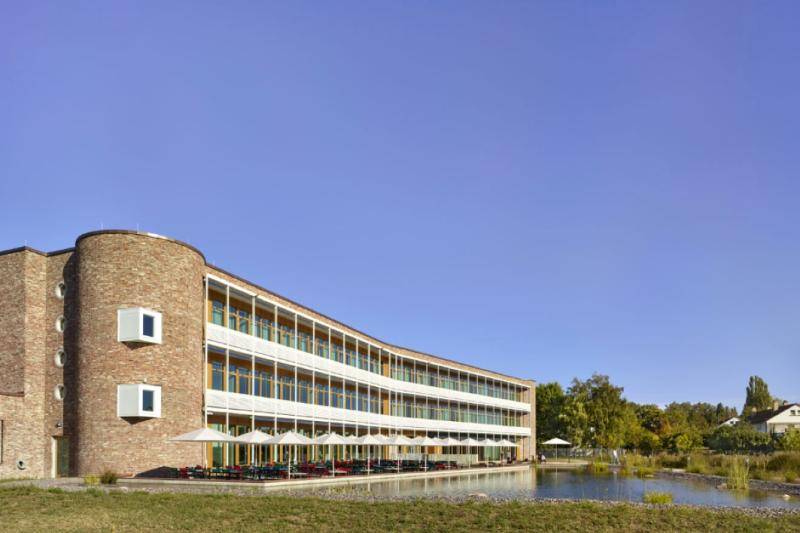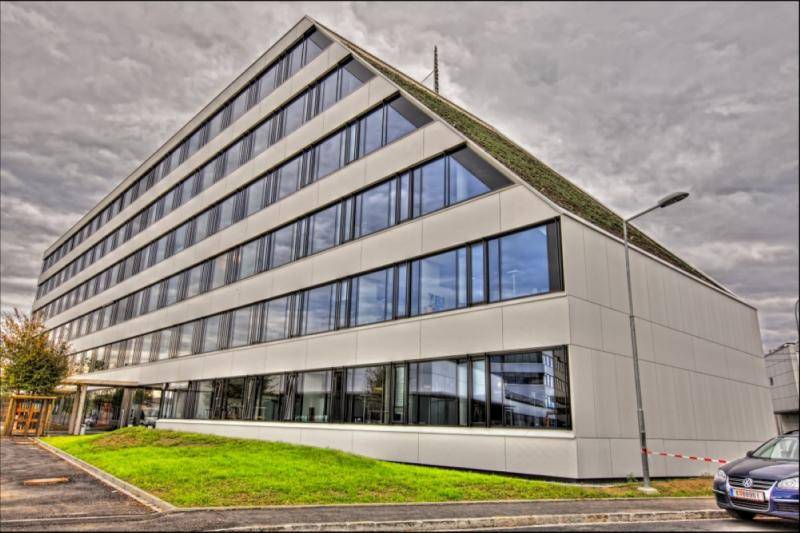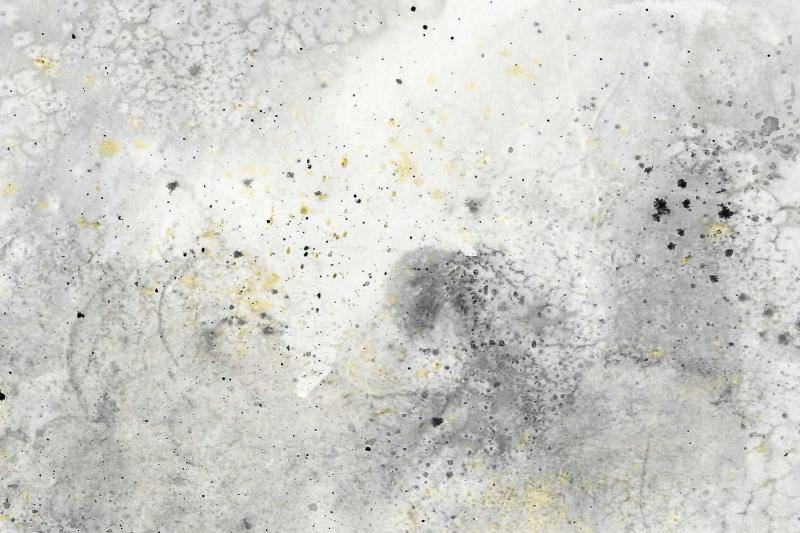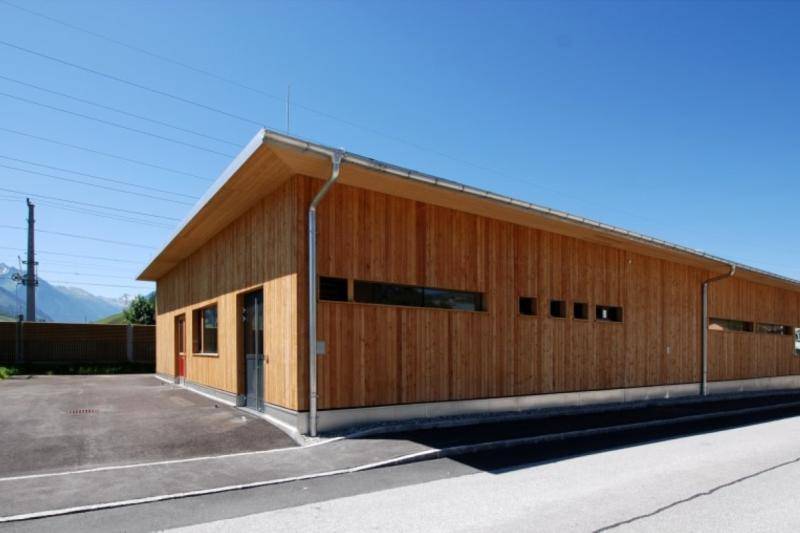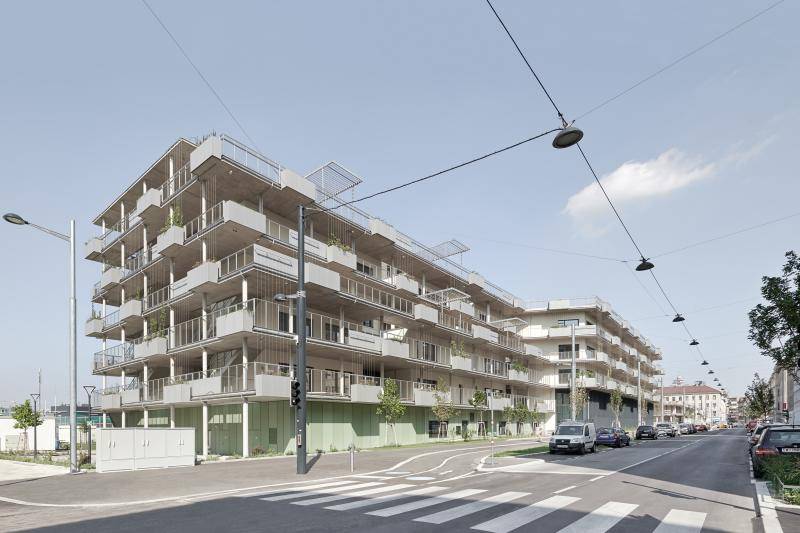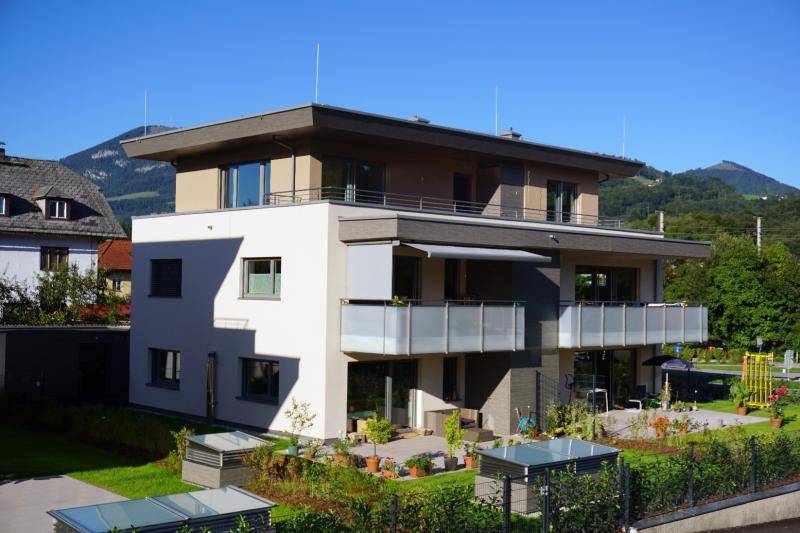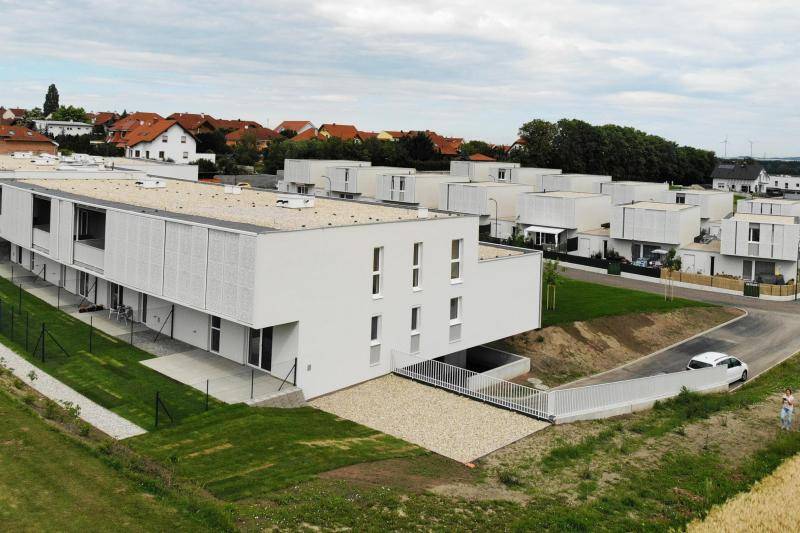Germany's first residential building from the 3D printer
Germany's first residential building to be produced using a 3D printer was to be supplemented with innovative building technology in the area of heating and cooling. The aquatherm black surface heating and cooling system was integrated into the concrete element ceilings. The result is a thermally activated building element that creates a pleasant, uniform climate without convection or draughts and allows complete freedom in the design of open and modern spaces.
2021
160 m²
Hous3Druck UG
MENSE-KORTE ingenieure+architekten

What is currently probably the most innovative residential building in Germany has been built in Beckum, North Rhine-Westphalia: The two-storey detached house with around 160 square meters of living space was not built using conventional construction methods, but printed by a 3D concrete printer, making it the first of its kind in Germany.
The building was printed by Peri GmbH. A gantry printer was used: the print head moves along three axes on a permanently installed metal frame. The construction of the house consists of three-shell walls that were filled with insulating material. During the printing process, the printer already took into account the pipes and connections to be laid later. This innovative technology not only saves a considerable amount of time compared to conventional construction methods, but also significantly reduces the consumption of resources. The building was planned by MENSE-KORTE ingenieure+architekten from Beckum, the client is Hous3Druck UG.
The ceiling of the house was made from precast concrete elements. The Syspro climate ceiling is a precast concrete slab with a statically contributing in-situ concrete supplement. The special feature: The aquatherm black surface heating and cooling system from aquatherm was installed close to the surface between the lattice girders directly on the lower reinforcement layer of the element ceilings. As a result, the heating/cooling coils are protected from damage to the construction site after the element ceilings have been concreted. This creates a thermally activated building element, as the surface heating and cooling system enables a pleasant, uniform climate without convection or draughts and complete freedom in the design of open and modern rooms.
Made from corrosion-resistant polypropylene plastic, the registers gently heat the ceiling to surface temperatures of up to 26 °C. The energy is then transferred as heat radiation. The energy is then emitted into the room as radiant heat. Where the heat radiation hits objects, these are heated. The measured air temperature with this type of heating can be approx. 3°C lower than with convection heating due to the uniform heat radiation from the surfaces surrounding the room - the thermometer shows 20°C and it feels like 23°C. This promotes a sense of well-being and also saves around 18% energy.
Installation in the ceiling also offers systemic advantages for passive cooling: Unlike conventional air conditioning systems, which remove heat from the room through ventilation with air movement, air conditioning ceilings remove the cooling load from the room mainly by means of radiation. With the exception of the sometimes hygienically necessary air exchange, draughts are excluded or reduced to a minimum by this process.
aquatherm black was produced to customer specifications in sizes ranging from 24 cm x 60 cm to 48 cm x 500 cm at the aquatherm Group's main plant in Attendorn, South Westphalia. A total of 97.4 m² of registers were used. This corresponds to an occupancy rate in the building of around 60 percent and therefore a small occupied area, which is nevertheless sufficient to heat and cool the building effectively.
